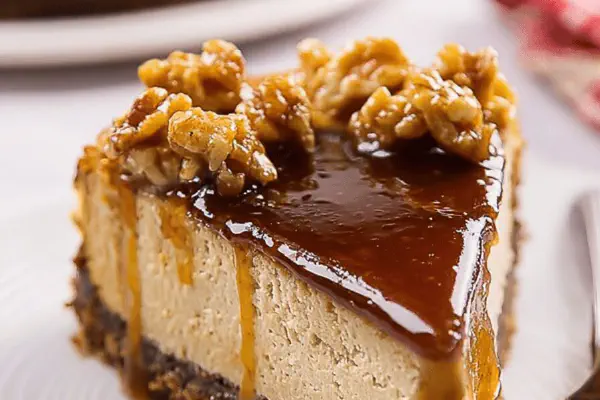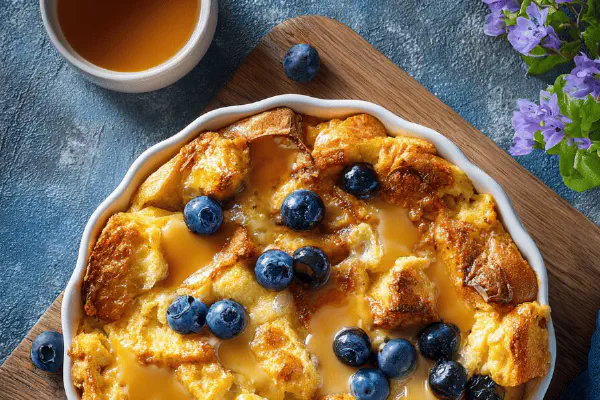Maple Ginger Fondue

By Emma
Certified Culinary Professional
Ingredients
- 25 ml (1 2⁄3 tablespoons) arrowroot powder
- 35 ml (2 1⁄3 tablespoons) water
- Juice of 1 lime (about 15 ml)
- 200 ml (7⁄8 cup) maple syrup
- 200 ml (7⁄8 cup) coconut cream
- Fruits and cake for dipping — strawberries halved, peaches sliced in eighths, peeled apples quartered, pineapple cubed, banana slices, halved grapes
- Pound cake cubes
About the ingredients
Method
- Measure arrowroot powder into a small bowl. Pour water over it and stir briskly until fully dissolved. Set aside; this mix prevents lumps if added too fast.
- Skip grating ginger. Juice lime fresh to capture zest and acidity—a citrusy twist that lifts maple sweetness. Keep juice ready.
- Heat maple syrup in a medium saucepan over medium heat. Watch closely; it begins to simmer with tiny bubbles at edges in 2-3 minutes. Avoid boiling hard—caramelization risks bitterness.
- Once syrup simmers, slowly whisk in arrowroot mixture while stirring vigorously. The liquid thickens quickly; lower heat to maintain gentle simmer. Stir constantly to prevent arrowroot settling or clumping.
- Add coconut cream in a steady stream. The fondue will loosen then thicken again. The scent should shift to sweet coconut mingled with maple syrup—thick enough to coat back of a spoon, glossy surface with slow ripples.
- Remove from heat. Stir in lime juice last to avoid curdling or breaking curds. The acidity brightens and balances richness.
- Transfer to fondue pot or heatproof bowl placed on warming plate or low simmer on burner. Keep warm but do not boil.
- Arrange dipped fruits and cake cubes on platter. Use fondue forks or wooden skewers for easy dipping.
- If fondue hardens too much while sitting, stir gently over low heat to loosen. Arrowroot can set firm when cooled, avoid letting cool totally.
- Leftover fondue? Refrigerate in a sealed container. Reheat gently with splash of cream or water to restore creaminess, whisk briskly.
- If coconut cream unavailable, substitute heavy cream or evaporated milk but add a pinch of salt to balance sweetness.
- Maple syrup: pale or medium grade best—dark can overpower with bitter notes.
Cooking tips
Chef's notes
- 💡 Arrowroot powder goes in after syrup simmers small bubbles show; no lumps if mix water first and stir fast. Dumping arrowroot dry? Clumps stuck, burnt spots risk. Slowly whisk in, reduce heat once thickening starts; watch texture constantly, thick custard stage means done.
- 💡 Don’t boil maple syrup hard; scent sweet and buttery turns chemical, bitter notes if bubble roar. Medium-low heat to catch small edge bubbles before arrowroot. Stirring consistently prevents arrowroot from sinking, sticks to pan bottom burns fast and ruins fondue taste/textures.
- 💡 Add coconut cream slow, steady stream after arrowroot thickens. Sudden temperature drops cause separation, ugly curdling. The fondue loosens then thickens again; glossy shine with gentle ripples signals readiness. If no coconut cream, heavy cream with pinch salt to cut sweetness; evaporated milk works but lacks richness.
- 💡 Lime juice always last off heat to avoid curdle. Sharp citrus brightens, lifts sweet maple, but acid added early breaks curds. Alternative citrus: orange zest or few drops lemon juice, keep quantities equal. Freshly squeezed preferred, packaged less punch, alters fondue texture slightly.
- 💡 Fruits firm, ripe but not mushy. Bananas ripe make fondue overly sweet, mix sticky. Pound cake or brioche cubes soak well, hold but don’t dissolve immediately. Forks or skewers best dipping tools; sticky fingers happen otherwise. Cover leftover fondue directly surface with plastic wrap to prevent skin; reheat gently adding liquid for creamy texture.
Common questions
Why lumps form in fondue?
Arrowroot not dissolved before adding syrup is main cause. Also rapid temp change. Stir fast and slow whisk arrowroot mix. If lumps start, strain or redo batch. Avoid dumping powder dry into hot liquid, always water mix first.
Can I use corn starch or tapioca?
Tapioca decent substitute—thickens clear, but slower. Corn starch cloudy, less stable on heat. Arrowroot stands gentle heat variations better. Tapioca may need more cooking time; texture differs slightly. No arrowroot? Use tapioca but expect subtle changes.
Fondue too thick or clumpy?
Reheat gently with splash water or cream. Low heat and constant stirring loosen up thickened mix. Overcooked arrowroot breaks down, grainy texture possible. Heat control crucial. If too thin, whisk extra arrowroot-water mix slowly but avoid lumps.
How store and reheat leftover fondue?
Fridge in sealed container with plastic wrap over surface to stop skin. Reheat low heat, whisk adding splash cream or water to revive creaminess. Avoid microwave direct—uneven heating breaks texture. Cool fondue sets arrowroot firm; heat gently to loosen.



